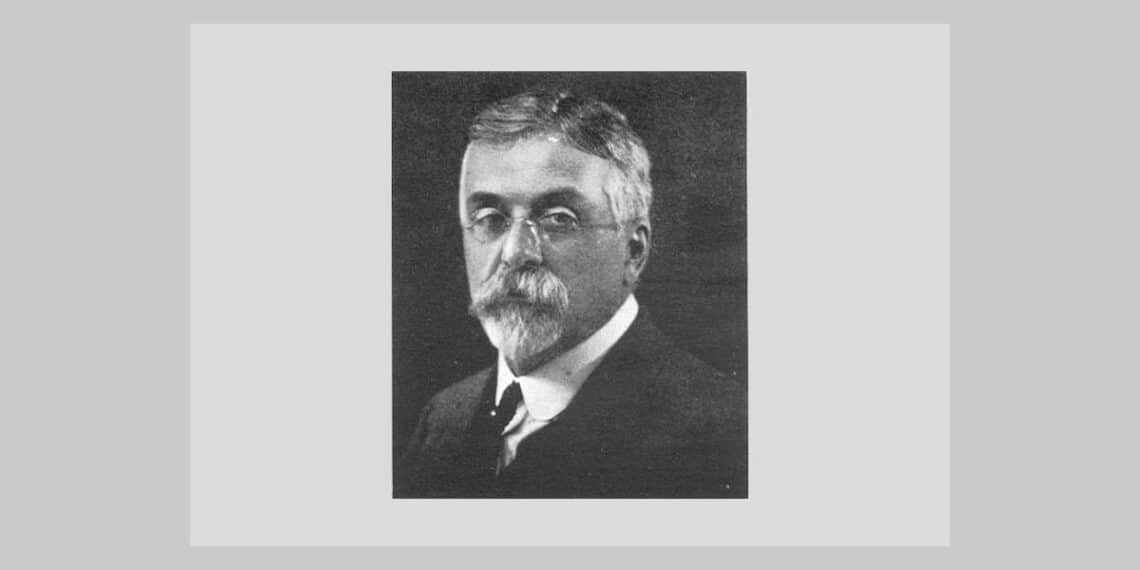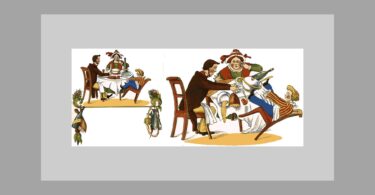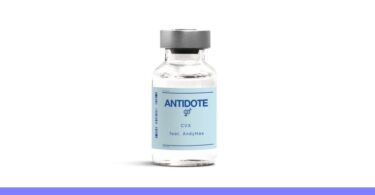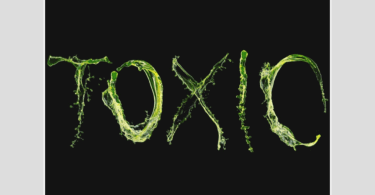Translated by Katja Schütt and Alan Schmukler
The following article gradually unfolds with philological accuracy a method which hardly attracted interest in homeopathy so far: Cyrus M. Boger’s method of finding the simillimum by means of the family analysis. Especially in one-sided cases and in patients without characteristic symptoms, this method was of much use to him. An article written by Boger in 1924, and translated by Jürgen Hofäcker, serves as the foundation for the following description and commentary. The author presents a case from his own practice to illustrate the practical implementation of Boger’s method.
On the sources
Cyrus Maxwell Boger, was born in 1861 in Western Pennsylvania, and died on September 2nd, 1935, in Parkersburg, West Virginia. He was a master homeopath in his time. Boger managed to merge the two essential trends of homeopathy’s first 150 years, due to his intimate knowledge of Clemens von Boenninghausen’s [1] work as well that of contemporary American homeopathy. He presented the matured fruits of this synthesis in his later work, the final and thoroughly revised and completed edition of the Synoptic Key[2].
My personal experience has shown that the true value of this work for homeopathic practice, can only be realized when studying all his writings in depth. However, this has only been possible with restrictions so far. Besides the generally known and obtainable writings, he wrote more than 150 articles which have been published and discussed in the Homoeopathic Recorder and Proceedings of the International Hahnemannian Association (PIH). Only a few could be read so far by means of two small articles of Indian reprint. Since the appearance of The Collected Writings [4] the situation as improved substantially, and now 70 new articles written by Boger are accessible. To read further journal publications will be difficult, as already mentioned by Robert Bannan in his forward to The Collected Writings and confirmed by my personal investigations at the Institute for the History of Homeopathy in Stuttgart.
The Boger-Method
In the article Finding the Similimum [5], written in 1924, Boger describes a method to find the simillimum by means of the family analysis, which, according to my knowledge, is not mentioned in any other writing. Boger wrote:
»[…] Associated individuals known as blood kin, invariably carry forward certain predilections to disease, so that by noting the ten or fifteen nearest blood relatives and their complaints, as accurately as possible, we are able to enumerate the relative
proportions of the various tendencies present. Such findings show parental influences to be fifty per cent, basically active. Grandparents and children are the next most potent factors. The remainder include peculiarities descending from still earlier ancestors and are of a very persistent kind. The actual symptoms of the patient are generally found to be an amplification of the hereditary findings, while a comparison of the two series usually points to such rubrics in the repertory as will quickly bring into relief the most similar remedies. It is especially helpful in those single symptom cases which Hahnemann called the most difficult of all.«
The most important points in this chapter are:
Comparing the current disease tendencies of the patient and disease tendencies of his blood bonds, the following results show up:
a) The disease tendencies of his parents agree the most with the disease tendencies of the patient (50%).
b) The next largest agreement shows the disease tendencies of his children and grandparents.
c) The remaining disease tendencies consist of peculiarities of the patient’s former ancestors. These disease tendencies are of a stubborn nature.
d) The actual ailments of the patient generally display an increase of the inherited findings of the family.
The simillimum is found easily after comparing the disease tendencies of the patient and family and choosing the appropriate repertorization rubrics. This method is especially of use in one-sided cases [7].
Boger further writes:
» […] Working out a test case will exemplify the method. The patient had already improved marvellously for months after Pulsatilla 12X was given in three doses, twelve hours apart.
A careful examination showed sixteen points of morbidity in as many individuals of the nearest blood kin. Of these, seven were of the rheumatic type, two typhoids, two pneumonias, two dysenteries, one sepsis and one each cardiac and haemorrhagic. A glance at the corresponding rubrics of the repertory gave phosphorus, pulsatilla and sulfur the first place. The indications upon which pulsatilla had been given are not regarded as characteristic by any means, yet in this scheme they become the individualistic, hence deciding ones.
Let me stress the scientific accuracy and speed of this method which begins with the self evident and objective, general findings and ends by using subjective sensations and mental symptoms for the final differentiation. Moreover it cuts a path of its own right through the repertory toward the deeply acting constitutional remedy of the patient.”
In this chapter Boger illustrates the single steps of his method which can be summarized as follows:
- First we have to note down the diseases of the blood bond and patient.
-
Then the diseases of the blood bond and patient have to be compared and the results have to be written down.
-
These are followed by the subjective sensations and mind symptoms of the patient.
This procedure offers a method with which symptoms are used for differentiation, which are not used in a usual analysis, as they are not characteristic for a remedy. Therefore we can use this method to find the remedy in cases with difficulty finding the simillimum, due to lack of characteristic and individualizing symptoms.
This analysis based on Boger’s writings reveals an important difficulty we meet in almost any of his writings: The facts are described with such a brevity and conciseness that there is no additional aspect to derive therefrom. Without further explanations or knowledge, Boger’s writings remain largely incomprehensible and cannot be used in practice.
With this article we can count ourselves lucky that the discussion of the 45th Annual meeting of the International Hahnemannian Association has been added, which took place after Boger’s lecture of the article. Other homeopaths seem to have had the same problem and got the following hints from Boger:
Details from the discussion [8]:
»Dr. Krichbaum: […] Suppose you were asked to do a carpenter job, making a wheelbarrow, and they gave you the various pieces and you didn’t know anything about it. It would take you three weeks and would your wheelbarrow, after it was completed, look as complete? We are talking about the finished product. You know this materia medica, but when you get to talking about it, you talk about the newer terms. That is what my main objection is. Let us get down to earth and talk things we can all grasp.
Dr. Boger: That simply means that I am to translate the language that I have been using into language which you can understand, that is what it means, and I admit that am not always an adept at it.
Dr. Curtiss: Doctor, we want something concrete I think. Suppose you say a person dies from cardio vascular troubles, somebody in the family dies of cancer; somebody dies of apoplexy, will you give us the rubrics in which we would look for it in the ordinary repertory, when the people whose heredity we were looking for had ancestors who died of those diseases?
Dr. Boger: In the first place, all the different organs or system of organs are summarized there, and you see what percentage died of cardiac vascular troubles first and compare it with his past history, and then look in the repertory under glands, if that is what the indications are, or look under blood, or under heart, or under circulation.
Dr. Curtiss: Suppose he died of cancer?
Dr. Boger: It would depend upon what organ was affected. If she had cancer of the uterus I would look up under uterus. The classification is strictly that of the tissue affected. For instance, if the infection is in the: leg, it is in the muscular part of the leg, it is the muscular system. Look up in the muscles, not the leg […] I hope you all try this method and next year we will talk from experience and not from opinion.”
The hints derived from this discussion enlighten and modify the single, methodical steps:
-
We compile a list of the affected organs and organ systems of the family.
-
We compare this list with the complete disease history of the patient.
-
We repertorize the affected organs and organ systems.
Here it finally becomes evident how we can repertorize our already compiled lists of disease tendencies of the patient and blood bond. We don’t use the diagnostic findings, but consider the affected organs and organ systems for repertorization.
The following question is to clarify: Shall we consider the rubrics:
A) which appear in both series and therewith constitute symptoms of the patient as well as the blood bond, or
B) all symptoms of the patient and blood bond regardless of the symptoms which equally appear in both of them
Argumentation for a repertorization according to alternative A:
Both chapters of his writing favor alternative A: “while a comparison of the two series usually points to such rubrics in the repertory as will quickly bring into relief the most similar remedies”, p.158, and “and you see what percentage died of cardiac vascular troubles first and compare it with his past history,«, p.160). That means that we only have to consider the rubrics of organs and organ systems which appear in the patient as well as the blood bond. This alternative of repertorization is called A in the following and constitutes the common subset of both series.
Argumentation for a repertorization according to alternative B:
Boger wrote: “It is especially helpful in those single symptom cases which Hahnemann called the most difficult of all” (p.158) Considering that Boger recommended this method for one-sided cases in which only one organ system is affected and where there are no accompanying ailments, and we furthermore consider his case sample, we have to assume that he wants us to repertorize both disease tendencies of the patient as well as the blood bond. In Anbetracht dessen, daß Boger seine Methode insbesondere bei einseitigen Fällen empfiehlt, this alternative of repertorization is called B in the following and includes all symptoms of both series.
A final solution of the question can only be found by the practical application of both alternatives.
A short summary of Boger’s method looks as follows:
-
Determination of the affected organs and organ systems of the patient.
-
Determination of the affected organs and organ systems of the blood bond.
3. Comparison of both series.
4. a) Repertorization of the affected organs and organ systems according to alternative A (The common subset of both series.)
or
b) Repertorization of the affected organs and organ systems according to alternative B (The sum of both series)
5. Adding rubrics of the subjective sensations and mind.
Now we try to use this method in practice. As old “Kentian’s” we use Kent’s Repertory and will soon realize this hardly represents the organs and organ systems. But if we know Boger’s Synoptic Key, we will realize immediately, that he has given us a tool which can be used for the described method.
The Synoptic Key is arranged into three parts. The first part consists of a repertory, the second one the materia medica, and the third of the supplemental reference table. When studying the repertory carefully, one will find a lot of organ rubrics. If we also consult the reference table, which contains an extension of the repertory rubrics as well as additional organ rubrics, this tool appears to be ideal. Moreover, the materia medica part is constructed in a way that the remedy’s organ relations are listed first. But the comparison of organ relationships in the materia medica and reference table also demonstrates that many rubrics from the materia medica were not implemented into the reference table or repertory part. Soon I’ll make these accessible by means of a revision.
The Boger method used in a case of my practice
The following case has been worked out with Boger-Boenninghausen’s Therapeutic Card Repertory. This method almost forces us to use this repertory as it is based on the Synoptic Key. However, it still contains the mentioned faults with regard to the “organ cards”.
No further details will be described with regard to the differentiation of main symptoms and symptoms by the side which usually have been made by the homeopath of the first generation and by myself as well.[10]
On 6 February, 1996, a five and a half month old girl is brought into my practice. The girl is too large and fat considering her age.
Main symptom 1: Since her birth the respiration interrupts repeatedly. This was observed for the first time when the Guthrie test was made [11]. Further paroxysms regularly appeared in the hospital when her diapers were changed. The largest paroxysms had a duration of eight minutes. The paroxysms decreased since the appearance of neuroderrmatitis. Now they especially appear when she is moved downwards, as when carrying her downstairs.
At the same time: cyanosis, tonic spasms
Main symptom 2: Neurodermatitis which started after she had been vaccinated during the fourth month of her life.
Symptom by the side 1: Since being vaccinated the girl suffers repeatedly. She suffers from subfebrile temperatures of about 38,5° C.
Symptom by the side 2: Frequent projectile vomiting shortly after eating.
Father
Allergic rhinitis
Grandfather
Recurrent stomach ulcer
Grandmother
TBC
Mother
Childhood: skin eruptions after eating fruits.
Abortion during the 11th week of pregnancy
Morning sickness for five months
Hemorrhoidal thrombuses. Has been operated on twice at the end of her pregnancy.
Grandfather
Varicosis
Fourfold Pulmonary embolism
Nettle rash
Grandmother
Pulmonary embolism
Varicosis
Additional symptom 3: Anxiety when moving rapidly, as when being twirled or thrown up in a game for example.
Results of the family analysis:
Analysis of organs/organ systems:
a) 2 x Pulmonary embolism, Mother hemorrhoidal thrombuses. Comparison with the patient = zero (Card 069, Blood)
b) 2 x varicosis, 1 x hemorrhoids. Comparison with the patient = zero (Card 070, Blood vessles)
c) 1 x stomach. Comparison with the patient = projectile vomiting (Card 290, Stomach)
d) 2 x skin. Comparison with the patient = Neurodermatitis (Card191, Skin)
Repertorization rubrics:
Family
Stomach Card 290
Skin Card 191
Blood Card 069
Blood vessels Card 070
Children: Anxiety motion Synthetic Repertory [12] p..85
Repertorization according to alternatives A and B:
A) Common subset of the series:
Family anamnesis Card 290 + Card 191
Patient: Anxiety on motion
Remaining remedies: Aconitum and Lachesis.
B) Sum of both series:
Family anamnesis Card 290 + Card 191 + Card 069 + Card 070
Patient: Anxiety on motion
Remaining remedy: Lachesis
Prescription and case development
The patient received Lachesis Q1 (Helios) on 6 February 1996. One globule had to be dissolved in 80 ml of water, thereafter he had to put one table spoon of the remedy in 100ml of water and to take one teaspoon after ten succussions, every other day.
On 21 February 1996 the mother told me that the girl got a fever of about 40º C after the third dose (with affecting organs, with vomiting for two days). Today the girl has a normal temperature for the first time since the vaccination. There is an aggravation of the skin.
New prescription: Lachesis Q1, every other day, one teaspoon of the second dilution.[13]
On 4 March 1996 the temperature is normal. Anxiety on motion disappeared, the respiration does not intermit anymore. The child is even-tempered and as cheerful as never before. The skin on the back, chest and crook of the arm which aggravated after the appearance of fever, has ameliorated, which remains constant since a week. The buttocks are excoriated.
Prescription: Lachesis Q2, every other day, in the second dilution.
On 4 April 1996 the skin on the back is still rough. The child does not want to turn itself and is very lazy. Teeth did not appear yet. Since then I received no feedback from the mother.
Comment: In this case the remedy chosen according to repertorization method B was already approved before the 1st prescription, as the mother reported upon my telephone inquiry, that the patient does not tolerate any touch on the external throat. She would scream and shriek then, but likes to be oiled on the remaining parts of her body. One could argue that I had done a careless anamnesis because this would be difficult to disprove. Nevertheless, this case approves Boger’s method which allowed to me to find the curative remedy without considering characteristic symptoms. If the characteristic symptom of Lachesis would have been taken as the starting point, the prescription would have been made on the unsteady basis of a keynote, or the uncertain basis of keynote prescription could have been supported by Boger’s method.
Conclusion: Boger’s article allowed me for the first time to use the family analysis to chose the simillimum according to clearly and explicitly described principles. So far, I had also analyzed the family analysis and could approve, like Boger, that the ailments of the patient are usually an increase of inherited tendencies. But I did not use this knowledge in practice to chose the simillimum. Moreover, this methods offers us the possibility to chose a deep acting remedy in one-sided cases without characteristic and differentiating symptoms. Certainly, the method’s strengths and weaknesses can only be demonstrated by its practical application. That’s why I want to conclude with a quote by Boger: “I hope you all try this method and next year we will talk from experience and not from opinion”.
I would appreciate to know and compile your experiences. Surely, a later publication of them would be of use for many practitioners and their patients.
Notes
1 Among others Boger translated Clemens von Boenninghausen’s Systematisch-Alphabetisches Repertorium der homoeopathischen Arzneien written in 1833 and edited Boenninghausens Characteristics and Repertory, a compilation of all repertories written by Boenninghausens and also including Hippokrates Aphorisms, written in 1863.
2 Cyrus M.Boger, A Synoptic Key of the Materia Medica, Reprint of the 6th revised and expanded edition, Neu-Delhi 1990.
3 Cyrus M.Boger, The Study of Materia Medica and Case Taking, Nachdruck Neu-Delhi 1991, und: Cyrus M.Boger, Studies in the Philosophy of Healing, Nachdruck Neu-Delhi 1991.
4 Cyrus M.Boger, Collected Writings, Edited by Robert Bannan, Edinburgh 1994
5 The article is based on a lecture given by Boger in 1924 at the International Hahnemannian Association. First print: Proceedings of the 45th Annual Session of the International Hahnemannian Association [PIH], 1924, reprint: C.M.Boger, Collected Writings, S.156-157.
6 Samuel hahnemann writes about the difficult treatment of one-sided diseases ind §§ 272 and 273 of the Organon der Heilkunst (6.Aufl. [ORG VI], Textcritical edition, edited by Josef M.Schmidt, Heidelberg 1992), no further sources are known to us. Unfortunately Boger does not point out where Hahnemann describes the one-sided cases as most difficult to cure.
7 Compare ORG VI, §§172ff.
8 PIH, 1924, reprinted in: C.M.Boger, Collected Writings, S.158-161.
9 Cyrus M. Boger/Clemens von Boenninghausen, Therapeutische Taschenkartei für homoeopathische Ärzte, I.Teil: Allgemeines, II.Teil: Lokales, Hamburg o.J.
10 Bernhard Moeller describes this in ACD II/1997, in the second of several articleis on C.v. Boenninghausen’s method.
11 The Guthrie test serves to prove an increase of Phenylalanin.
12 Synthetisches Repertorium [SR], edited by Horst Barthel and Will Klunker, 3. Edition, Heidelberg 1987.
13 That means: One teaspoon is taken from the first dilution glass and put into a second glass with 100ml of water. Thereafter the remedy is taken after prior stirring.
References:
-Barthel, Horst/Klunker, Will (Hrsg.): Synthetisches Repertorium [SR], 3.Auflage, Heidelberg 1987
-Boger, Cyrus M.: A Synoptic Key of the Materia Medica, Nachdruck der 6., überarbeiteten und erweiterten Auflage, Neu-Delhi 1990
-ders.: The Study of Materia Medica and Case Taking, Nachdruck Neu-Delhi 1991
-ders.: Studies in the Philosophy of Healing, Nachdruck Neu-Delhi 1991
-ders.: Collected Writings, herausgegeben von Robert Bannan, Edinburgh 1994
-Boger, Cyrus M./Boenninghausen, Clemens von: Therapeutische Taschenkartei für homoeopathische Ärzte, I.Teil: Allgemeines, II.Teil:
Lokales, Hamburg o.J.
-Hahnemann, Samuel: Organon der Heilkunst, 6.Auflage [ORG VI], textkritische Ausgabe, herausgegeben von Josef M.Schmidt, Heidelberg 1992
Jürgen Hofäcker
Email: [email protected]
Heilpraktiker
Koenigstraße 2
70173 Stuttgart
Germany
@ The article was first published in “Archiv für Homoeopathik”, vol. 5/1996, p.157-165, and is republished with friendly permission of Jürgen Hofäcker and Stefan Reis.
Several articles written by C.M.Boger can be read at the author’s website: www.link3.com







really good article
would like to hear more cases on the same approach
God article, always helpful to the deep insights of masters such as Boger. This is actually another aspect of miasamtic prescribing – either the similimum covers the inherited miasm, or an intercurrent specific anti-miasmatic remedy aids the constitutional similimum.
Its interesting to see Boger developed this in his Card Repertory. Would like to investigate the Family cards…
Jurgen, have they been included in one of the major repertories, like Complete repertory?
By the way, are you MSc From UCLAN? If yes, so am I 🙂
leela
Very interesting and a different meaning of ‘family analysis’ from the one we hear so much about. I have used Boger’s writings quite a lot, such as are available in English. I plan to try out this method, it makes sense. I wonder where a family history of diabetes fits in? Is the rubric ‘diabetes’ too specific? ‘Glands’ seems too general and relates a lot to lymph glands, and of course there is no rubric ‘endocrine’. Diabetes affects the heart and arterial system so much, should one take ‘circulation’?
sir,
the .simillimum is very useful to the learnrs.this article makes the new leaner to understand the realremedy before analyzeing the symptom and disease.
simillimum is the correct remedy which eradicate the total disorder of health,according to homeopathic thearpy the curative power is only based on “THE LAW OF NATURE”and the curative poweris not only by thearpetic metheod of healing under law of simillars.genetic factors of human health is part and parcel to ruleout the disease.
similimum is that homeopathic medicine which restores the sick to health.